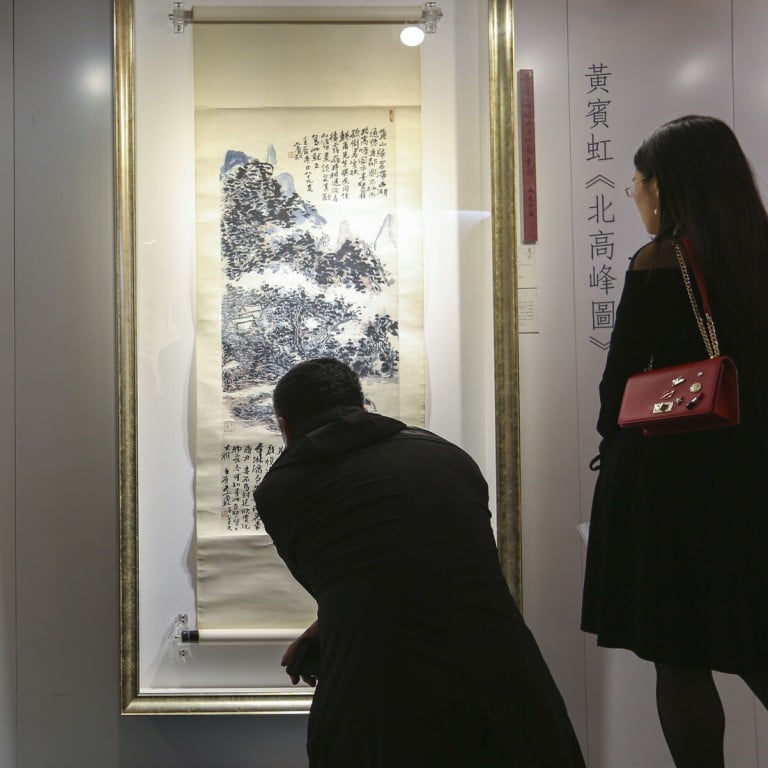
China’s millennials, Gen Z turn to Louis Vuitton handbags, art toys and Japanese whisky as collector’s items
- The tastes of wealthy Millennials and Generation Z members differ considerably from older generations, with a focus on items that reflect their modern culture
- Chinese auction houses are changing their auction catalogues, adding art toys and whisky and dropping items like rare tea preferred by older generations
A generational shift is occurring among Chinese collectors with once popular items like tea replaced by handbags, toys and Japanese whisky as millennials and Generation Z refine their tastes and their investment habits.
“Decades-old Puer tea had long been popular as an alternative investment to shares and real estate among Chinese entrepreneurs and businesspeople at around my age or older. We hoarded them as an investment and used them as high-class gifts for rich customers and local officials,” said Jay Li, a businessman in his late 40s living in Guangdong, the capital of Guangdong province.
“But when I see a lot of young collectors in [trainers] and sweatshirts buying Japanese whisky and art toys, I think I’ll have to think about changing my position on Puer. After all, the young generation’s tastes are different from ours and that will certainly have an impact on the future of the collectibles market.”
For our generation, we prefer to collect limited edition items that meet our social needs and show our special personality
Each batch has its own backstory and mythology, boasting great cultural importance, as well as exceptional flavour, but to his surprise, Puer tea offerings have all but disappeared from auction catalogues, to be replaced by Japanese whisky, art toys and hip-hop paraphernalia.
But according to a 2020 study from Art Basel and UBS, which looked at the impact of the coronavirus on the gallery sector, the millennial segment of high net worth individuals in the United States, Britain and Hong Kong had the largest share of big spenders, with 14 per cent having spent over US$1 million on collectibles, compared with just 5 per cent of wealthy members of the baby boom generation of the 1940s, 1950s and 1960s.
“The previous generation of Chinese collectors, my parents’ or grandparents’ age, mainly collected Buddhist statues, porcelain, paintings and calligraphy, with the heirloom value being their main consideration for the collections. But for our generation, we prefer to collect limited edition items that meet our social needs and show our special personality,” said 24-year-old Steve Zhang, whose family runs a logistics company in Guangdong and Hong Kong.
Chinese painting and calligraphy was the most popular lot at China’s auctions, according to a 2019 report released by Hurun, accounting for about 40 per cent of items sold, let by demand from collectors in northern China.
Those in the Pearl River Delta region preferred jewellery and jade, while in Hong Kong, Macau and Taiwan, jade ware and porcelain were the most favoured.
At a recent auction in Guangzhou, a piece by 20th-century Chinese master modernist painter Fu Baoshi was sold for 47.73 million yuan (US$7.3 million), indicating that painting and calligraphy remained sought after items given their history of stable appreciation in value and their flexibility to realise value globally.
Young Chinese collectors are also now showing a new passion for the auction market, but for very different items than the older generation, with a Louis Vuitton handbag showing a small pen drawing by 39-year-old Japanese artist Ayako Rokkaku sold for 130,000 yuan (US$19,900) at the same Guangzhou auction.
China’s millennials, Generation Z leading nation away from American
In 2019, a set of 28 bottles of Karuizawa 36 Views of Mount Fuji whisky were valued at between 340,000 yuan (US$52,000) and 400,000 yuan, with a single bottle now estimated to be worth 20,000 yuan (US$3,000) to 28,000 yuan.
“Whisky has become more and more sought after in recent years among young Chinese collectors born after the 1990s, in line with their social needs,” said Vicent Liu, who runs the K&K Whisky & Cigar bar in Guangzhou and has collected whisky for 10 years.
“That is, they can afford to collect and also afford to drink limited edition Japanese whiskies priced at 40,000 yuan [per bottle] or more, which is the common way for them to show their success or identity with a social circle.
“Ordinary Japanese whisky can increase in price by 10 to 15 per cent per year, so collection-level products can double in price in just two years. Many Puer and Baijiu liquor buyers have switched to collecting whisky in recent years.”
Millennial collectors seem to be less fond of traditional Western art, but are more attracted to works that blend both Eastern tradition and modern civilisation
Recently, some limited editions of domestic trainer brands have appreciated to as much as 50,000 (US$7,656) yuan a pair among Chinese Generation Z collectors, according to Newman Liang, founder of Target Xplus Advertising, who has been collecting toys for over 20 years.
“Since last year, almost all auction houses in China, no matter what type of business they were doing before, have started auctioning more art toys, catering to younger collectors,” said Liang. “These millennial collectors seem to be less fond of traditional Western art, but are more attracted to works that blend both Eastern tradition and modern civilisation.
“Nowadays, members of Generation Z are very fond of Chinese ancientry style and ACGN (animation, comics, games, short novels) culture. Farsighted collectors have already started to collect limited editions of what they like.”


